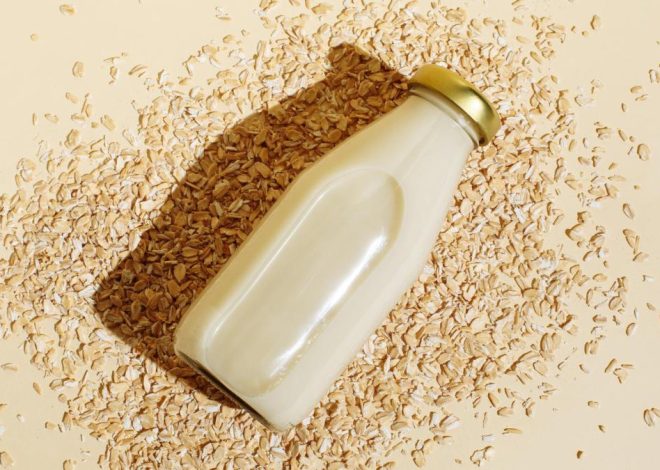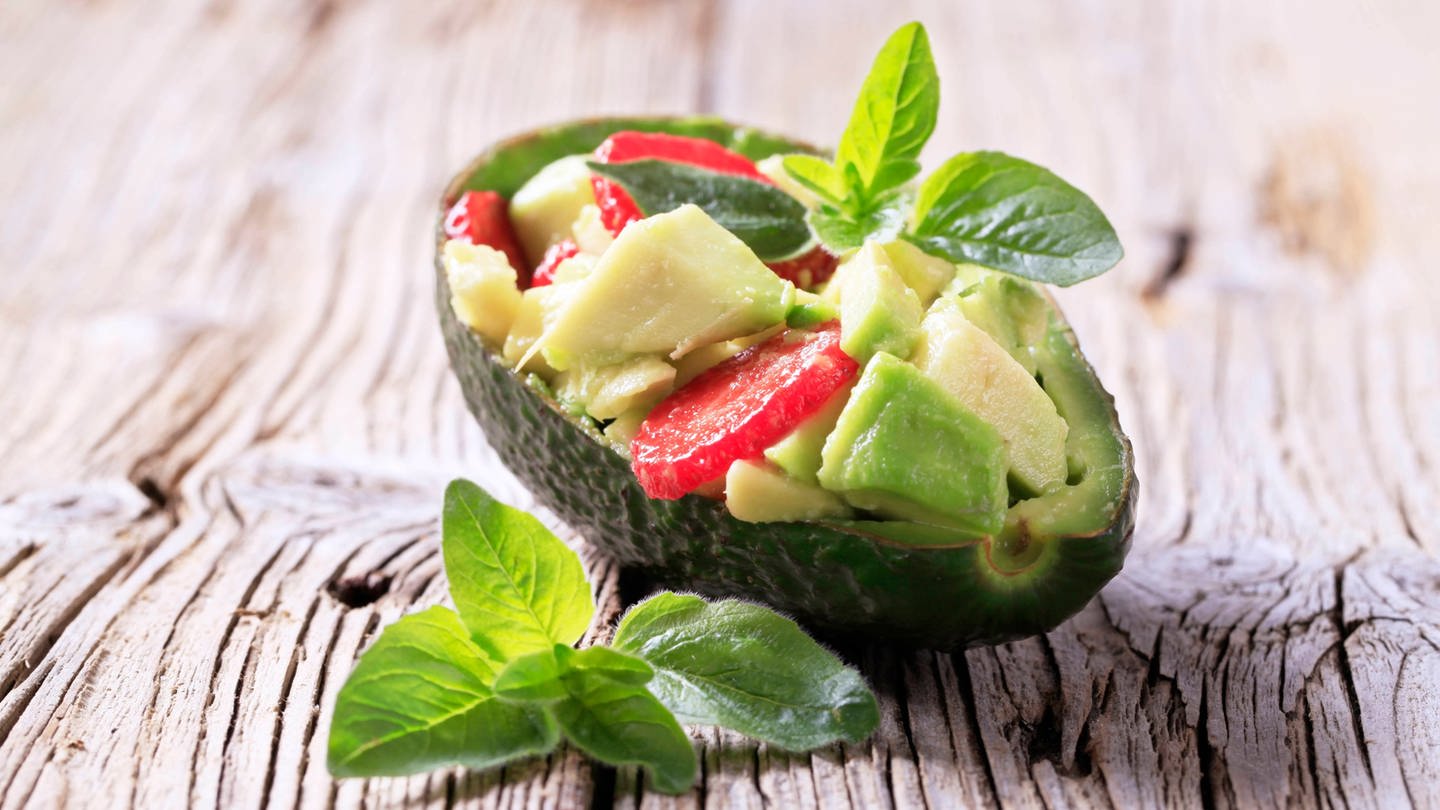
Saving the climate with nutrition – What consumers can do
Is the vegetable burger from the US manufacturer produced in a more environmentally friendly way than the chicken from the organic farm in the neighboring village? This is the question asked by many consumers who are ready to change their eating habits for the climate.
Download Audio (26.3 MB | MP3)
Demand: Halve meat consumption
In 2020, people in Germany bought 22 percent more organic food than in the previous year. But which consumption is really sustainable? In 2019, every person in Germany ate 60 kilograms of meat. Far too much, says the Federation for the Environment and Nature Conservation, BUND. The environmental protection organization regularly publishes the “Meat Atlas”, a study on “animals as food”. In the Meat Atlas 2021, BUND calls for Germany to halve its meat consumption. This is the only way to save the climate and protect biodiversity, i.e. the variety of animals and plants.
Factory farming is considered the main driver of climate-damaging gases in the food sector. Meat production alone is responsible for 15 percent of global greenhouse gas emissions. The biggest causes of global warming are:
- Carbon dioxide (so CO2),
- methane (arises in the digestive process of ruminants) and
- Nitrous oxide (soil sweats when mineral or organic fertilizer is applied)
The BUND also complains about the enormous amount of land needed just to grow animal feed.
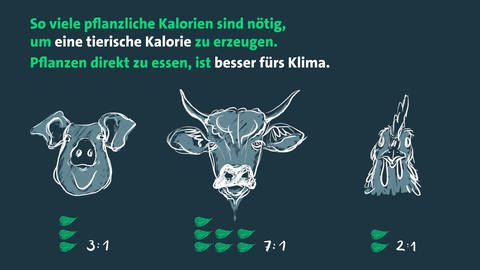
Eating plants directly instead of feeding them to animals is better for the climate
SWR
Britta Wagner
Eat plant-based food yourself instead of feeding it to animals
It is much more efficient to eat the plant-based food directly instead of feeding it to cattle, which take years to be ready for slaughter and release a lot of harmful methane during this period.
In order for humans to consume one animal calorie, the animal must consume seven times as many plant calories.
Young people in particular are changing their diet and paying attention to organic quality and regional products. Almost 13 percent of 15 to 29 year olds now avoid sausage and meat entirely – twice as many as in the general population.

Free-range chickens: Is a vegetarian burger from the USA more environmentally friendly than chicken from an organic farmer in the neighboring village?
IMAGO
IMAGO / Martin Wagner
All environmental scientists agree that plant-based foods are more sustainable than meat. They also include so-called meat substitute products such as soy sausages or lupine patties, which you can eat in hamburgers. Some of these finished products come from abroad.
Meat substitute from the USA: more sustainable than the organic chicken next door
The US food manufacturer “Beyond Meat”, based in California, produces vegetarian meat substitutes that many say taste like meat. Main ingredients are peas, mung beans, fava beans and brown rice. But is a vegetarian burger from the USA more environmentally friendly than chicken from an organic farmer in the neighboring village? The surprising answer from Heidelberg sustainability expert Guido Reinhardt is: yes. The long transport does not play a major role because these products are usually transported by cargo ship and not by plane.
In warmer climates, additional energy is often not required for greenhouses. If you don’t just want to eat cabbage and turnips in winter, you should buy vegetables from southern Europe. In Almeria, southern Spain, vegetables are grown for all of Europe. 22 percent of tomatoes, peppers, cucumbers and zucchini go to German supermarkets. And since more and more consumers are asking for organic products, some Spanish producers have also made the switch. According to the producers’ association Coexphal, which represents 83 companies and farmers in Spain, 39 percent of tomatoes and nine percent of peppers in Alméria come from certified organic farming. For example, producers do not use insecticides or weed killers.
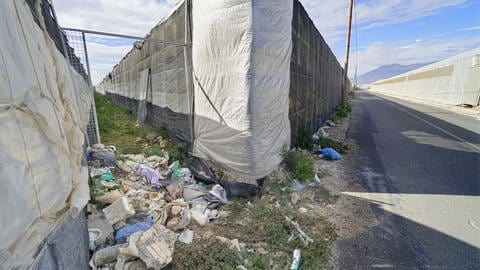
Fruits and vegetables for all of Europe are grown in greenhouses in Andalusia, in the so-called “sea of plastic”
IMAGO
IMAGO / Hollandse Hoogte
Confusing messages for consumers
Nevertheless, growing vegetables in one of the driest regions of Europe is not exactly sustainable. The sea of plastic in greenhouses in Alméria now covers 30,000 hectares. Due to the huge water consumption, the groundwater level has fallen worryingly. Since 2010, some of the irrigation water has been drawn from seawater desalination plants, but that is not climate-friendly either. Because the systems are often operated with fossil fuels.
Pure climate labels are controversial
So how can we tell when shopping whether the vegetables have been grown sustainably? Achim Spiller is Professor of Agricultural and Food Marketing at the University of Göttingen. He finds the messages for consumers confusing. Spiller is also chairman of the Scientific Advisory Board for Agricultural Policy, Nutrition and Consumer Health Protection, or WBAE for short. In the summer of 2020, this advisory board recommended that food manufacturers be required to label their products with a climate label.
At a glance, consumers should see how much CO2 was caused during the production of the product. This way they could consciously decide what to do.
But the pure climate label is controversial. The BUND criticizes that it could lead to wrong consumer decisions. Animal welfare, the contribution to landscape conservation and biodiversity would not be taken into account in a label that only takes CO2 emissions into account. The Federal Ministry of Food and Agriculture has also spoken out against the recommendation of the Scientific Advisory Board.
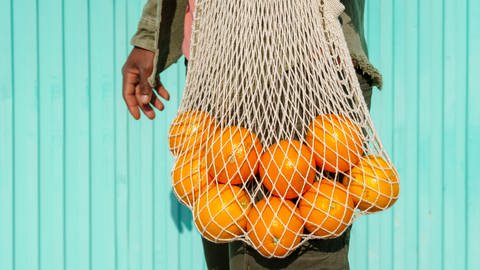
Tangerines on the Internet: In order to keep all aspects of a sustainable diet in mind when shopping, the Heidelberg IFEU Institute has put together the most important points
IMAGO
IMAGO / Westend61
Lots of organic seals
Producers in Germany have been able to use the EU organic seal voluntarily since 2001. A hexagonal green, black and white symbol identifying organically grown products. State-mandated organic control bodies are responsible for certifying and monitoring farmers. In 2010, a new organic seal that was binding across the EU was added. There are also other eco-labels, such as Demeter, Naturland or Bioland, which are also controlled by the growing associations.
New in 2020: the Nutriscore label, a voluntary traffic light label on the packaging that manufacturers use to show how healthy the product is. However, the ecological balance plays no role.
Keeping an overview is not easy for consumers
The Heidelberg IFEU Institute is critical of both a climate label and a sustainability label. In order to keep all aspects of a sustainable diet in mind when shopping, the IFEU Institute has compiled the most important points on its website. Of course, the IFEU list also includes: Please go shopping on foot or by bike. The most ecological purchase is of no use if you do it in an SUV. You should avoid disposable bags and pay attention to environmentally friendly packaging. Not everyone has one of the more than 100 unpackaged stores in Germany nearby. But you can also use reusable nets for fruit and vegetables in the supermarket or buy yoghurt, milk and cream in deposit jars instead of in tetra packs.
Who can afford the nutritional transition?
However, organic products are sometimes significantly more expensive than conventionally produced ones. And so in the end the question remains: Who can afford the nutritional transition? 14 percent of all Germans are so overburdened by housing costs that they have to save money on food. It may be that food has to become more expensive to cover the costs of more sustainable agriculture and food production. But it would be wrong if only those with higher incomes could afford to have a clear conscience.
SWR 2021/2022
Manuscript for the broadcast

Ethel Purdy – Medical Blogger & Pharmacist
Bridging the world of wellness and science, Ethel Purdy is a professional voice in healthcare with a passion for sharing knowledge. At 36, she stands at the confluence of medical expertise and the written word, holding a pharmacy degree acquired under the rigorous education systems of Germany and Estonia.
Her pursuit of medicine was fueled by a desire to understand the intricacies of human health and to contribute to the community’s understanding of it. Transitioning seamlessly into the realm of blogging, Ethel has found a platform to demystify complex medical concepts for the everyday reader.
Ethel’s commitment to the world of medicine extends beyond her professional life into a personal commitment to health and wellness. Her hobbies reflect this dedication, often involving research on the latest medical advances, participating in wellness communities, and exploring the vast and varied dimensions of health.
Join Ethel as she distills her pharmaceutical knowledge into accessible wisdom, fostering an environment where science meets lifestyle and everyone is invited to learn. Whether you’re looking for insights into the latest health trends or trustworthy medical advice, Ethel’s blog is your gateway to the nexus of healthcare and daily living.



